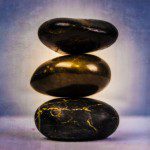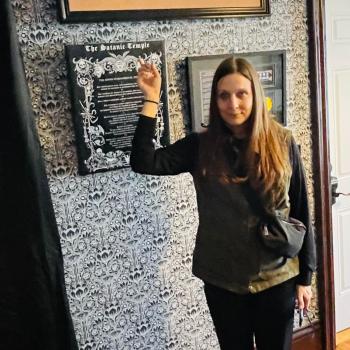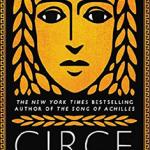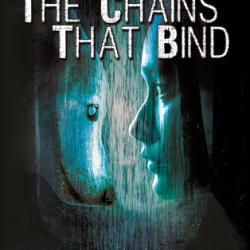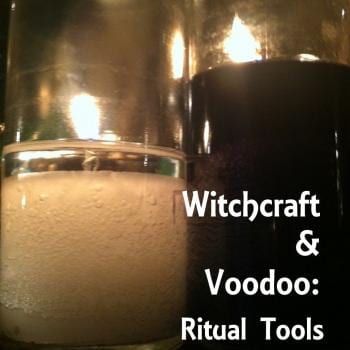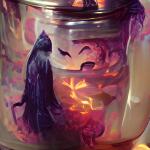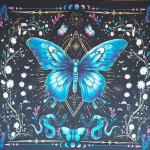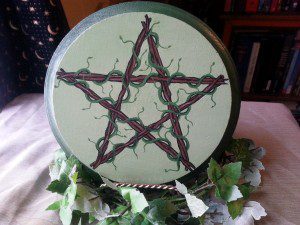
I make and sell altar pentacles at my Etsy store. I started doing this several years ago, even before I was selling on Etsy, because I noticed that you couldn’t seem to find them anywhere. There was a plethora of wands, numerous chalices, and even a handful of athames available at most metaphysical stores in the late eighties and early nineties, and there were hundreds of silver jewelry pentacles available, but pentacles intended for your altar were nowhere to be found. At the time I chalked that up to the Satanic Panic; the pentacle is the most obviously “Wiccan” of the four traditional altar tools, and big pentagrams made people nervous back then, while little silver ones might not be noticed right away.
But this hasn’t changed much in twenty years. Even now, the limited metaphysical suppliers that seem to carry them only offer a few options, and there’s only a couple of people selling them on Etsy that I can see. So I’ve been speculating as to why. Is it because Wicca’s popularity has fallen over the past couple of years and Wicca is the only Pagan tradition that seems to make regular use of them? I considered that but rejected it, because after my book tour I found that at least in Western Canada, the most common Pagan faith on the ground appears to be eclectic Wiccan Paganism of the “books for solitary practitioners” variety. Wicca’s “decline” seems to be limited to the blogosphere.
I realized that most of the altar pentacles I’d made were being shipped to the UK. This is the only item in my inventory that is not most commonly shipped to the United States (remember that I’m in Canada). Obviously European Witches must be using more pentacles in their practice than American Witches. So I wondered: why the difference? Then it occurred to me that books for solitary practitioners usually name the pentacle as one of the traditional witch’s tools, but they don’t do a very good job of explaining why you would use it or what to do with it. Some witches I have met did not even know that the books they’d read were not talking about the pendant they were wearing. So this article is dedicated to the explication of that oft-neglected but very important and useful altar tool.
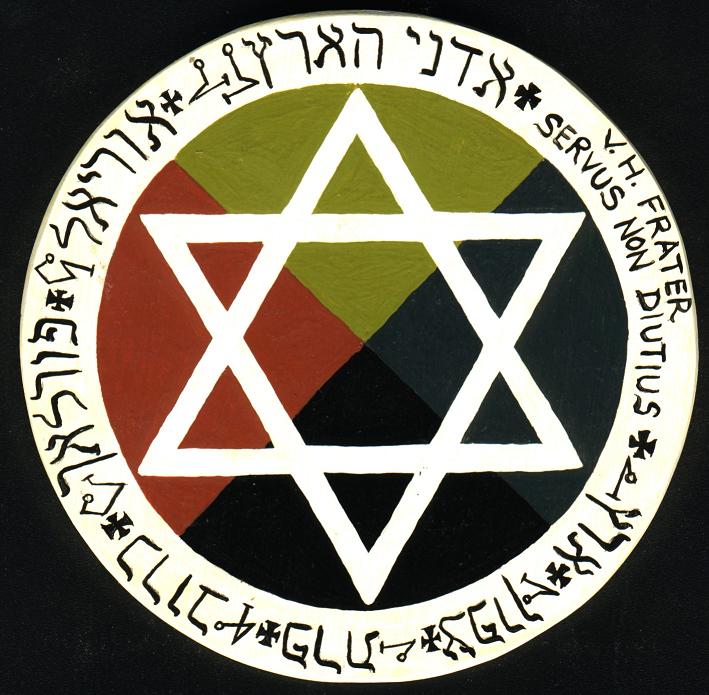
Pentagrams and Pentacles
I was taught that there is a difference between a pentagram and a pentacle, though a dictionary will often give them as synonyms: a pentagram is an equilateral five-pointed star, and a pentacle is such a star within a circle, or a similar object used in magick; such as the Earth Pentacle used by the Golden Dawn (which might actually be better described as a “hexacle” because it contains a six-pointed Star of David), and various of the Seals of Solomon (which are described as “pentacles” associated with particular planets.)
Wikipedia describes a pentacle as “an amulet used in magical evocation, generally made of parchment, paper or metal (although it can be of other materials), on which the symbol of a spirit or energy being evoked is drawn.” This is not a bad definition, but of course it’s by no means complete. Seals and amulets that also bear the name “pentacle” are probably called this because of their resemblance — both in appearance and purpose — to the five-pointed star in the circle. Let’s examine that five-pointed star, which is also sometimes known as the “pentangle,” in more detail.
History
The pentagram is actually much older than you might think. It was used as a symbol to represent a corner or a nook in early Sumerian cuneiform. Pentemychos, meaning “five corners” or “five recesses”was what Pherecydes of Syros called his cosmogony, referring to the seeds of Chronos placed within the Earth in order for the cosmos to appear. This work was lost to history but it influenced many others that came after it, right into Hellenic times.
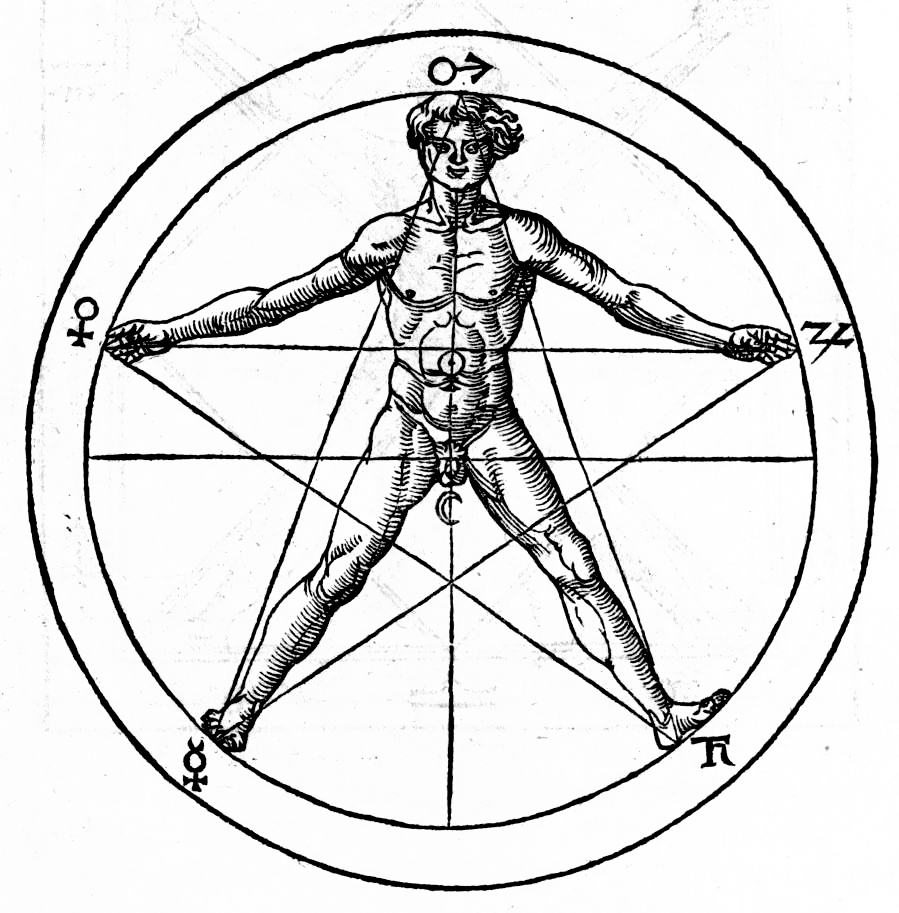
It was a sacred symbol to Pythagoras. Yeah, you know that guy whose Theorum you had to memorize in math class? Well, he wasn’t exactly a mathematician or a physicist as we would currently understand it: he was philosopher and a sacred geometrist. It’s hard to know exactly what he did invent because he had a cult of followers who were inclined to credit him with supernatural powers and some relation to Apollo and/or Hermes (but we’re witches, so then again, who knows?) and he apparently never wrote anything down. So many of his discoveries may actually have been the discoveries of the Pythagorean cult; ideas that include the dyad of philosophy (which directly translates into Kaballistic, Thelemic and Wiccan cosmology,) the tetractys (which strongly influences the Kaballah and Enochian magic,) and the music of the spheres (which strongly influences most Western mysticism and especially the New Age movement; and incidentally might not be so mistaken, as Voyager proved.) Some of those discoveries were extremely advanced; among them the mathematical relationship of music that produces differences in tone, the first cosmological model that involves concentric circles, the spherical shape of the earth, a feminist realization that women can also be good at math and science (since women were admitted as full members of the cult,) and, most importantly for us, the Golden Ratio.
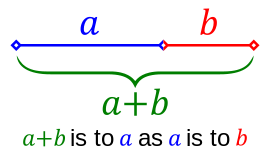
The Golden Ratio
As Wikipedia tells us, “in mathematics, two quantities are in the golden ratio if their ratio is the same as the ratio of their sum to the larger of the two quantities.” This sounds complicated but you’ll recognize it when you see it because when art is constructed according to this ratio, we find it beautiful. All major Greek architecture and some significant Egyptian architecture is fashioned according to this proportion; think of the Parthenon or the Great Pyramid of Giza. And the most pleasing art makes use of this principle to establish composition. This is what we recognize as perfect natural symmetry, and as philosopher and psychologist Adolf Zeising observed in the 19th century, much of nature is constructed according to this ratio: including trees, leaves, animal skeletal systems, nervous systems, flowers, molecular compounds, crystaline structures, astronomical systems (from solar systems to galaxies to the structure of the universe) and the structure of the human body. For this reason it is sometimes also called “the Divine Proportion.”

The pentagram is constructed entirely by the Golden Ratio. In the image to the right, you will see a regular pentagram colored to distinguish its integral line segments, which are of different lengths. The four lengths are in golden ratio to one another. So, what does that mean in terms of its symbolism? There are many layers of meaning here that can be construed:
- It represents the creation of the universe.
- It represents the Divine Power that created it.
- It represents the Universe itself.
- It represents humankind, since we are constructed according to this pattern and shape.
- It represents the relationship between macrocosm and microcosm; or as we like to say, “As above, so below.”
- It represents a perfect balance of forces.
- It represents the harmony of nature, especially in connection to the “music of the spheres.”
And that’s just what we can get out of it by recognizing the connection to the Golden Ratio! There’s more!
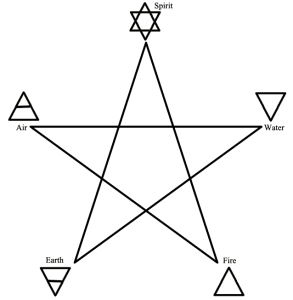
A Balance of Forces
This is not uncommon knowledge in occult circles, but pentagrams also represent the balance of the elements. Again we look to Pythagoras, whose cult invented the idea of the four classical elements of earth, air, water and fire. Many of us are aware that four of the five corners of the pentagram represent those elements, with the fifth one representing Spirit.
Not everyone knows this these days, but in ritual magick and some traditions of Wicca, pentagrams are drawn in different ways to invoke the powers of the four classical elements. The most commonly used ones, and the ones to which teachers will default when first teaching students, are the invoking and banishing pentagrams of earth.
Because the bottom right corner of the pentagram represents the classical element of earth, starting your pentagram in that corner, then continuing up to the top and forming the rest of the pentagram from there indicates that you are driving away things that affect the physical world; hence, the “Earth Banishing Pentagram.” Conversely, if you start your pentagram in the top, drawing a line to the bottom left corner, you are calling in Spirit to affect the physical world and create change there; hence, the “Earth Invoking Pentagram.” This, of course, holds true when dealing with any of the other elements, and you may wish to consider this in your magickal Workings if you haven’t already. For instance, a spell to improve your willpower might involve the use of the Fire Invoking Pentagram, while a spell to drive away nasty rumours might involve the Air Banishing Pentagram.
It is in this capacity, as a model of Creation and the natural flow of energy, that Feri does its work with such structures as the Iron and Pearl Pentacles.
Directional Symbolism
If the fifth point on the pentagram represents the spiritual aspect of creation, then the direction in which a pentagram is facing has a bearing on it symbolism. To quote Wikipedia, which actually has an excellent explanation of this:
Heinrich Cornelius Agrippa and others perpetuated the popularity of the pentagram as a magic symbol, attributing the five neoplatonic elements to the five points, in typical Renaissance fashion. By the mid-19th century a further distinction had developed amongst occultists regarding the pentagram’s orientation. With a single point upwards it depicted spirit presiding over the four elements of matter, and was essentially “good”. However, the influential writer Eliphas Levi called it evil whenever the symbol appeared the other way up.
- “A reversed pentagram, with two points projecting upwards, is a symbol of evil and attracts sinister forces because it overturns the proper order of things and demonstrates the triumph of matter over spirit. It is the goat of lust attacking the heavens with its horns, a sign execrated by initiates.”
- “The flaming star, which, when turned upside down, is the hierolgyphic [sic] sign of the goat of Black Magic, whose head may be drawn in the star, the two horns at the top, the ears to the right and left, the beard at the bottom. It is the sign of antagonism and fatality. It is the goat of lust attacking the heavens with its horns.”
- “Let us keep the figure of the Five-pointed Star always upright, with the topmost triangle pointing to heaven, for it is the seat of wisdom, and if the figure is reversed, perversion and evil will be the result.”
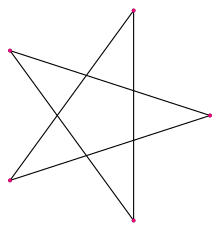
Of course Wicca does not so easily classify things into “good” and “evil,” but “physical” and “spiritual” do have a bearing. Typically Wiccans and witches use the upright pentacle for all the reasons stated above, and it’s also used in conjunction with the Triangle of Manifestation as the symbol of the Wiccan Third Degree; which (loosely) symbolizes that the High Priest/ess is in harmony with Spirit, Matter, and his or her True Will.
The inverted pentagram or pentacle, representing Spirit descending into matter, is used in many ways in modern occultism as well. It is the symbol of modern Satanism; not really as a perversion of the pentagram, as is commonly believed; but more to symbolize that Matter is more important than Spirit. Aleister Crowley made use of the inverted pentagram for this purpose in Thelema. And we also use it as the symbol of the Second Degree of initiation, which symbolizes that this is the degree at which a Wiccan Priest/ess learns to manifest the spiritual in the material world; and also that the Second Degree initiate is required to focus upon dealing with personal, material issues, or “feces coagulation.”
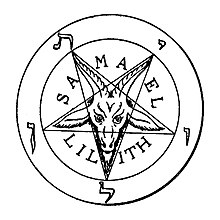
When the pentagram is drawn so that it appears to be rolling, as depicted on the left, it symbolizes time and natural cycles, with neither Matter nor Spirit predominating.
Symbol of the Horned God
The association with the Horned God of Wicca in the inverted pentagram is largely due to tradition, stemming from the Goat in the Star from La Clef de la Magie Noire (The Key of Black Magic,) a significant grimoire with a powerful influence on the modern occult movement. This was thought to be a secret symbol of the Templars in their (alleged) secret worship of Baphomet. But consider the symbolism of Spirit descending into Matter, and the integration of Macrocosm and Microcosm. I believe this is a perfect description of what the Horned God of Wicca represents; a God who is born into the world to live, die, and be reborn again, just as we are.
Protection
Pentacles and pentagrams are also used as protective symbols in magick. They delineate the barriers of a magick circle and are often used to bind and summon, as well as to invoke specific spiritual energies. The magickal principle behind this is that you are asking all of the energies of the gods and the universe to pool their resources to help you, and generally you are aiming those energies in a specific direction in order to accomplish this purpose.
Integration
Though the symbolism of the pentagram alone is an important part of the overall symbolism of the pentacle, there is also unique symbolism surrounding the integrated circle and star.
What About the Circle?
The symbolic meanings of a circle are manifold, ancient, and largely based in observing the natural world.
- It represents the structure of the Universe as we perceive it (think about it: moon, sun, Earth, solar system, galaxy, atom . . .)
- It represents the cycles of time.
- It represents continuity.
- Since we perceive the sky as circular, it represents the Heavens.
- To Jung, it represented a geometric archetype of the psyche; a map of our mind, if you will.
- In alchemy it represents a center point of focus; which, in other words,is a sign of the microcosm; again, “as above, so below.”
- To the Celts it was a protective barrier.
- It represents the Cosmic Egg; the point of potentiality from which our whole Universe and all things “hatched.”

Symbol of the Goddess
Because Venus’ orbit is almost perfectly circular, and because Earth orbits the sun at a a rate of every 1.6 Venetian years (at a ratio of 13 times to our eight,) Venus draws an interesting Spirograph pattern in the sky. Because this ratio is extremely close to the Golden Ratio, from our perspective, it traces a pentacle in the Heavens every eight years. This pattern is known as the Pentagram of Venus. It’s also known as the Rose of Venus (you notice how it makes a heraldic rose as well?)
Venus is the morning and evening star, so we’ve been aware of it, and its unique celestial pattern, for a long time. Some cultures believed it was two separate objects; others, such as the Babylonians, knew better; and they were the ones who first gave the planet the name of their goddess of love and sex; in that case, Ishtar. The Greeks didn’t know this, however, until Pythagoras (that guy again!) In the meantime they called the morning star Eospheros “Bringer of Dawn” or Phosphoros “Bringer of Light,” and the evening star Hesperos “Star of the Evening”; which the Romans translated as Lucifer and Vesper. The first Roman term is now much better known as a poetic name for the Christian Adversary; which is another Horned God connection. And it’s probably one of the ways in which occultists came to associate the Horned God as being directly connected to (and in some traditions, answerable to,) the Goddess.
But the Goddess connection continued to be reinforced. When Pythagoras’ findings became widely known, the Romans re-named the planet for their goddess of love and sex, Venus; which is, of course, how we get our modern name. Pliny the Elder identified it with Isis. The Persians identified it with their goddess Anahita. As a result, as Dan Brown pointed out in his novel The Da Vinci Code, Venus, and roses and pentagrams, have long been thought of among Western occultists as symbols of the Goddess and the Divine Feminine.
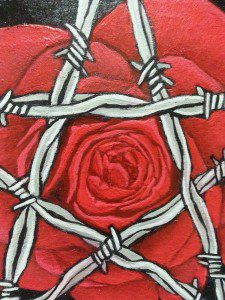
Symbol of the Cosmos: Elemental Earth
Now we finally come to the symbolism that most witches are familiar with. But I bet we haven’t gotten here in the way that you expected. Most of us know that the pentacle symbolizes the element of Earth. But do you know why?
It’s because it contains all of these other symbolic meanings! The pentacle symbolizes Elemental Earth because it represents the structure of the physical realm, manifesting Spirit into the material, and returning material energy to Spirit. The symbolism of the Golden Ratio within in the pentagram, bound within the circle, encompasses the structure of the Universe and the cycles of time. Together it represents the macrocosm; “as below, so above.”
In this respect, the hexagram “pentacle” of the Golden Dawn means exactly the same thing. The divided medicine-wheel circle is a depiction of the Sephirot of Malkuth on the Kaballistic Tree of Life, which means “kingdom,” which represents the physical Universe. The Star of David is a balance of energies, almost exactly like a yin-yang symbol, representing a juxtaposition of microcosm and macrocosm, creation and destruction, male and female, life and death, and so forth; like the poles of a magnet creating a spiritual and physical energetic torus.
And because it represents the free flow of Divine energies in the material universe, it represents wealth and abundance as well as spirituality. The things associated with Elemental Earth — health, family, home, career, food and wealth — are so associated because they are the result of spiritual abundance creating a material effect in the physical plane. When that flow of energy stops, those material manifestations end.
So What Do You Do with It?
Now that you know all of this, let’s rethink some of the common ritual uses of your pentacle:
The pentacle is used traditionally to hold the cakes for the cakes and ale ritual. It’s not just a weird plate. It is partially that, yes. But consider it: you are also blessing the food with all of the energies represented in the symbolism of the pentacle. It’s a Pagan Eucharist: the food becomes the source of transmission for the Divinity inherent in nature, and eating it tastes of the gods’ offerings of abundance.
The pentacle is also usually placed at the center of the altar; and some books will tell you to place objects on it when you’re consecrating or enchanting them. Again, it’s because you’re using it as a focus to direct all of those energies into your sacred and magickal Work; manifesting the powers of the gods and the cosmos into physical reality.
Sometimes the pentacle is used as a tangible, magickal shield to protect you against danger and attack. Just as vampire hunters in all the movies present crosses to the Undead boldly in order to drive them away through the power of faith, witches can aim their pentacles boldly against psychic attack. This is a simple method of calling upon the gods and the Universe to lend their formidable powers to your protection.
What Else Can You Do with It?
- You could use it as a focal point for meditations that make use of the pentagram; such as the Iron Pentacle or an elemental pathworking.
- You could hold it aloft towards Venus at sunset or sunrise to invoke the Goddess, Lucifer, or any goddess associated with Venus, such as Inanna, Ishtar, Astarte, Anahita, Isis, Venus, Aphrodite, Asteroth, Mary or Erzulie.
- You could hold it to your body with a point directly facing the ground to invoke the Horned God.
How about making use of the directional symbolism in your magick?
- Place your offerings to the gods on the pentacle with the point upright.
- Do wealth or fertility magick with the pentacle as a focus and the point facing downward.
- Turn it to form a wheel when using it for time-related magick or psychic healing.
We don’t tend to give the seemingly-superfluous pentacle as much respect as we ought to, because we don’t wave it around a lot in the circle. But we don’t have to, because its power is more than sufficient without elaborate gestures or complex spellwork. It is a holy symbol of the powers of the Universe coming together. It is a celebration of the integration of spiritual and material. It is the focus of the powers of the magick circle, which creates a microcosmic universe to model desired changes in the macrocosm. In a nutshell, it means: put all the powers of the Universe right here. That’s what you use it for.
I’m creating a Patreon account for those who’d like to consider being my patrons. Thanks for your support!
Like Between the Shadows on Facebook and never miss a post!


